

| This rather odd building has a combination of goals. First, it was designed as a kind of warehouse for the Emanuel Hoffmann Foundation collection. But the term schaulager can be translated in English as "viewing-warehouse or exhibit-depot, thus meaning a place where art is not simply stored but actively plays an educative, cultural and informative role."(website). It is neither a traditional museum nor warehouse, but a new type of art institution. Its main audience includes experts, researchers, scholars and students, although it does occasionally host exhibits open to a wider, more general audience. So it functions as a combination of public museum, art storage facility and art research institute. The building designed by the Pritzker-prize-winning team of Herzog & de Meuron is a polygonal form, with the side with the public entrance bent inwards. The first entrance is through a gabled gatehouse, after which a forecourt slopes down to the glazed wall with the proper entrance. The walls on each side of the forecourt have large LED screens which feature images that have been commissioned from artists by Schaulager. | ||
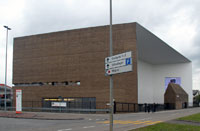 |
 |
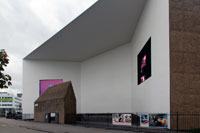 |
 |
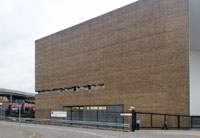 |
 |
| The strong walls of the protective structure are unique--a combination of "clay, gravel, pebbles and concrete, together with reinforced concrete and metal. Gravel, clay and pebbles were obtained from the building foundation excavation." (website) The surface was scratched to show the aggregate, giving the structure a sense of rough, earthy strength, to look "as if it had been extruded from the ground” ( Herzog & de Meuron description). Even the strip of curving window seems like a natural form, shaped like landscapes themselves. | ||
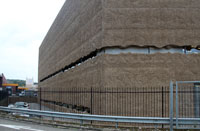 |
 |
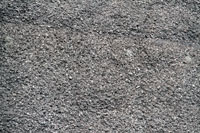 |
The "gatehouse" and sloping forecourt | ||
 |
 |
 |
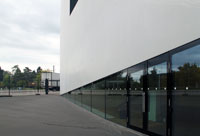 |
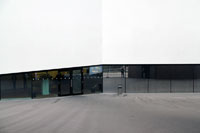 |
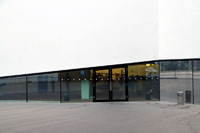 |
 Click here to return to index of art historical sites.
Click here to return to index of art historical sites.
 Click here to return to index of artists and architects.
Click here to return to index of artists and architects.
 Click here to return to chronological index.
Click here to return to chronological index.
 Click here to see the home page of Bluffton University.
Click here to see the home page of Bluffton University.
